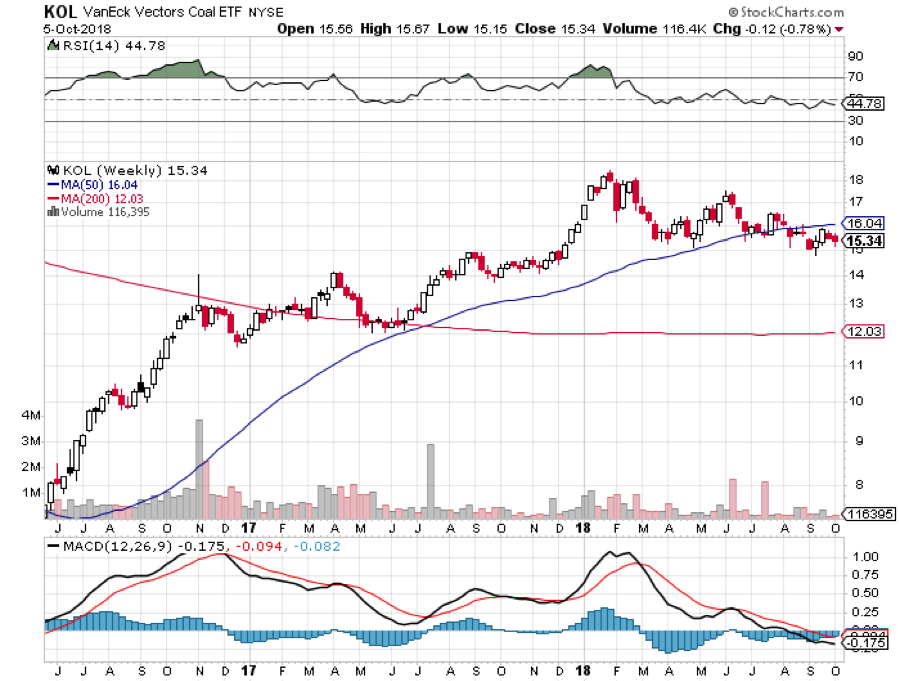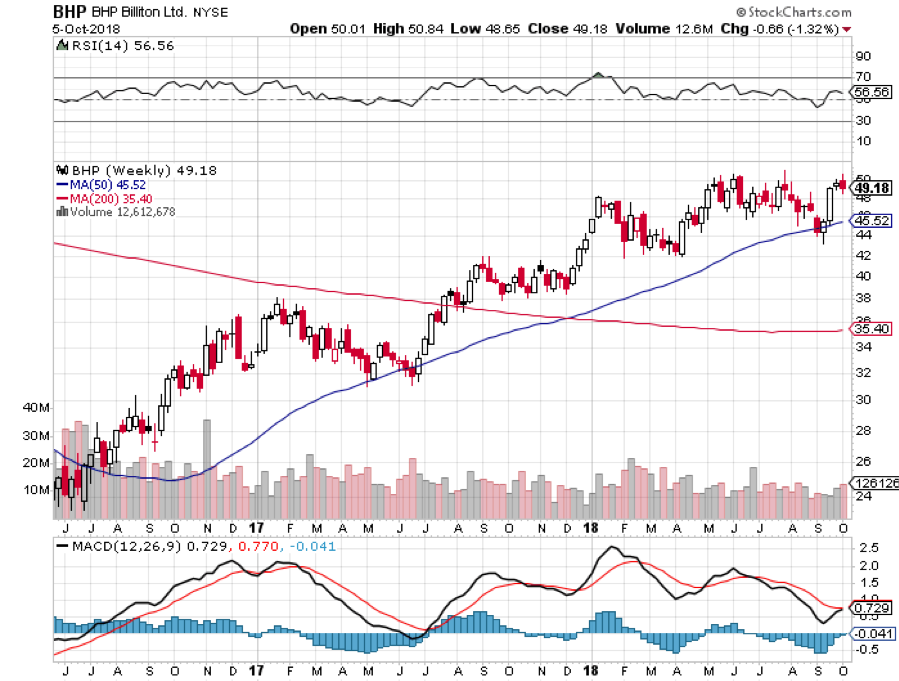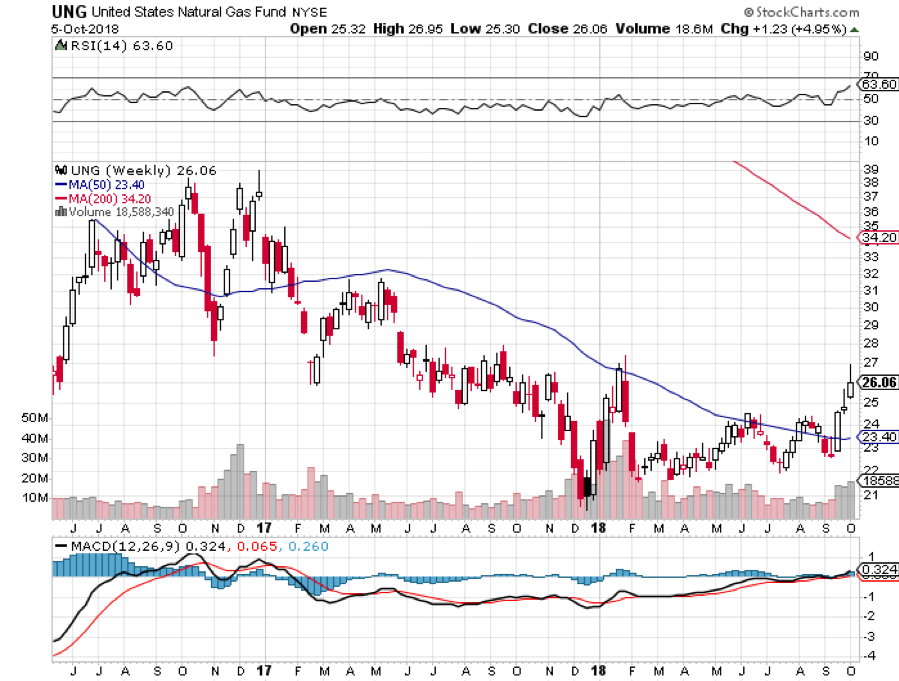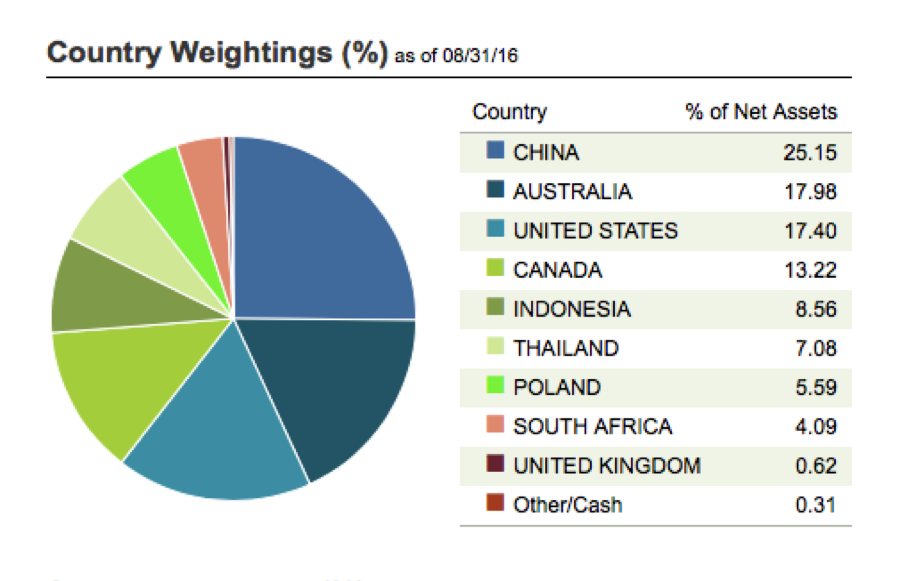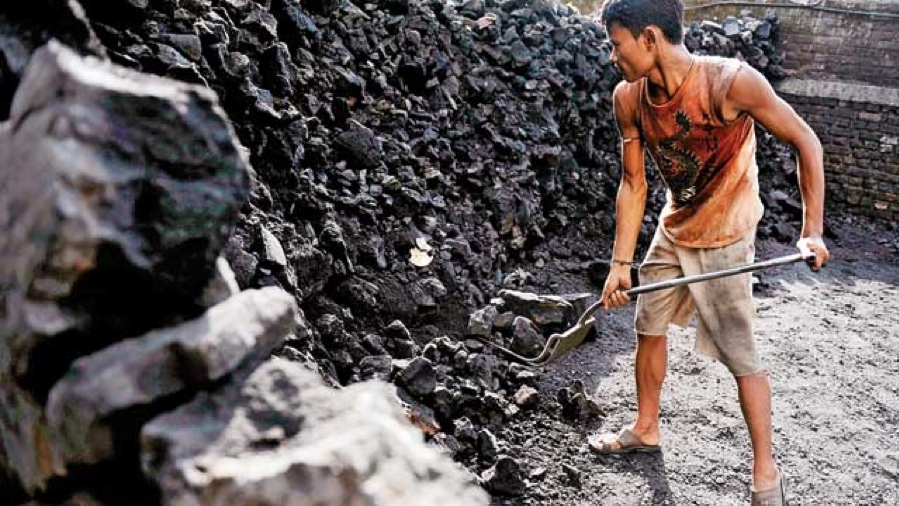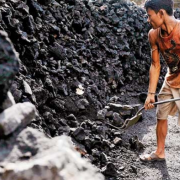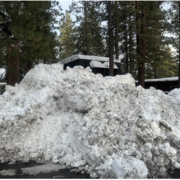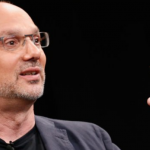What has been one of the top performing asset classes since the beginning of 2016?
Is it Apple (AAPL), Amazon (AMZN), gold (GLD), oil (USO), or collectible French postage stamps?
If you said “Coal,” you win the kewpie doll.
In fact, the 19thcentury energy source was one of the best investments you could have made over the past three years.
Indeed, the Van Eck Coal ETF (KOL) has picked up an eye-popping 210% since it printed its $5 low the first week of 2016.
Google (GOOG) eat your heart out.
You might give credit to the president for the meteoric move, thanks to policies so overwhelmingly helpful to the industry that they brought tears to the eyes of the owners of coal mining companies.
But you’d be wrong again.
Most of the move took place before the election.
As a result, I have recently been deluged from readers asking if it is time to buy this prehistoric energy source.
My answer is no, not ever, and not even with Donald Trump’s money.
However, my answer relies more on basic market dynamics rather than any environmental sympathies I might have.
You can blame China.
The Beijing government is manipulating its domestic coal industry to prevent them from defaulting on hundreds of billions of dollars with of loans to local banks.
So, it has cut back the number of days the industry can operate from 330 to 276 days a year.
What happens when you restrict supply and increase demand? Prices go through the roof as they have done smartly.
It gets better.
The Middle Kingdom was hit with rainstorms of biblical proportions, flooding many mines and forcing them to close many mines. The sushi hit the fan.
That forced major consumers, the big steel producers, and electric power plants to resort to the international spot market, or the “seaborne market” to cover shortages to avoid shutting down themselves.
Who is the world’s largest supplier to the seaborne market?
That would be BHP Billiton (BHP), the largest capitalized company in Australia, which has seen its shares appreciate by 144% since 2016 bottom.
I have been following coal for 45 years ever since I was the coal correspondent for the Australian Financial Review during the 1970’s.
I had to write a mind-numbing five pieces a week on coal (the AFR was a daily). So it’s safe to say that I know which end of a lump of coal to hold upward.
For a start, you never want to invest in an asset that is dependent on government fiat for rising prices. They can change their minds at any time. The loans in question could get paid off.
And you can count on the world market to suddenly find new supplies whenever a commodity price doubles.
Remember the Rare Earths bubble where we were active players?
After a hyperbolic bubble, prices fell by 90%. Rare earth turned out to be not so rare. Only the cheap labor to extract them free of environmental regulation was.
So you can count on the current coal bubble to deflate eventually. The perfect storm is about to run in reverse.
That leaves us with the long-term fundamentals of coal which are bleak, to say the least.
China is far and away the world’s largest coal consumer at 49%, followed by the US at 11%. This is why China is also the world’s largest producer of greenhouse gases.
China is making every effort to reduce reliance on these cheapest form of energy, thanks to the blinding, choking smog alerts besetting its largest cities.
It is only still using coal because with an economy growing at 6.6% a year plus, it has to rely on every energy form just to keep the lights only. Power brownouts can lead to political instability.
Coal consumption in the US has been in a death spiral for years falling from 50% to 33% of electric power generation over the past decade.
That led to the bankruptcy of several of its largest players such as Arch Coal (ACI) and Peabody Energy (BTU).
The collapse of natural gas prices to $2/btu made a cleaner burning alternative cost-competitive. And gas lacks the nitrous and sulfur oxides and particulate pollution prevalent in coal.
Read the prospectus of any electric power companies and you will find them besieged by lawsuits from consumers claiming that the coal they burned caused their asthma and cancers. Utility companies would love to be rid of it.
And then there’s solar energy.
California governor Jerry Brown has signed the nation’s toughest climate legislation, mandating that all power come from alternative sources by 2030.
On several days this year, alternatives already accounted for 100% of the state’s total power production.
While ambitious, the target is viewed as doable. Solar energy, which now accounts for 5% of the state’s power output, will do the heavy lifting.
Many other states are expected to follow suit. No room for coal here.
The United Kingdom has already taken this path as have many other nations.
It says a lot that a country that ran a coal-based economy for 300 years announces the closing of its last mine which it did a few years ago. It will replace the power output with alternatives.
Having lived in England during the violent miner’s strikes during the early 1980s, it was quite a revelation.
So the writing is on the wall. Another major producer, Anglo American (NGLB.BE) sold two major mines in Australia.
Coal is clearly an energy source whose time has clearly come and gone. So, will the price of coal. The next recession, which may only be a year off, could well drive the entire industry into bankruptcy.
